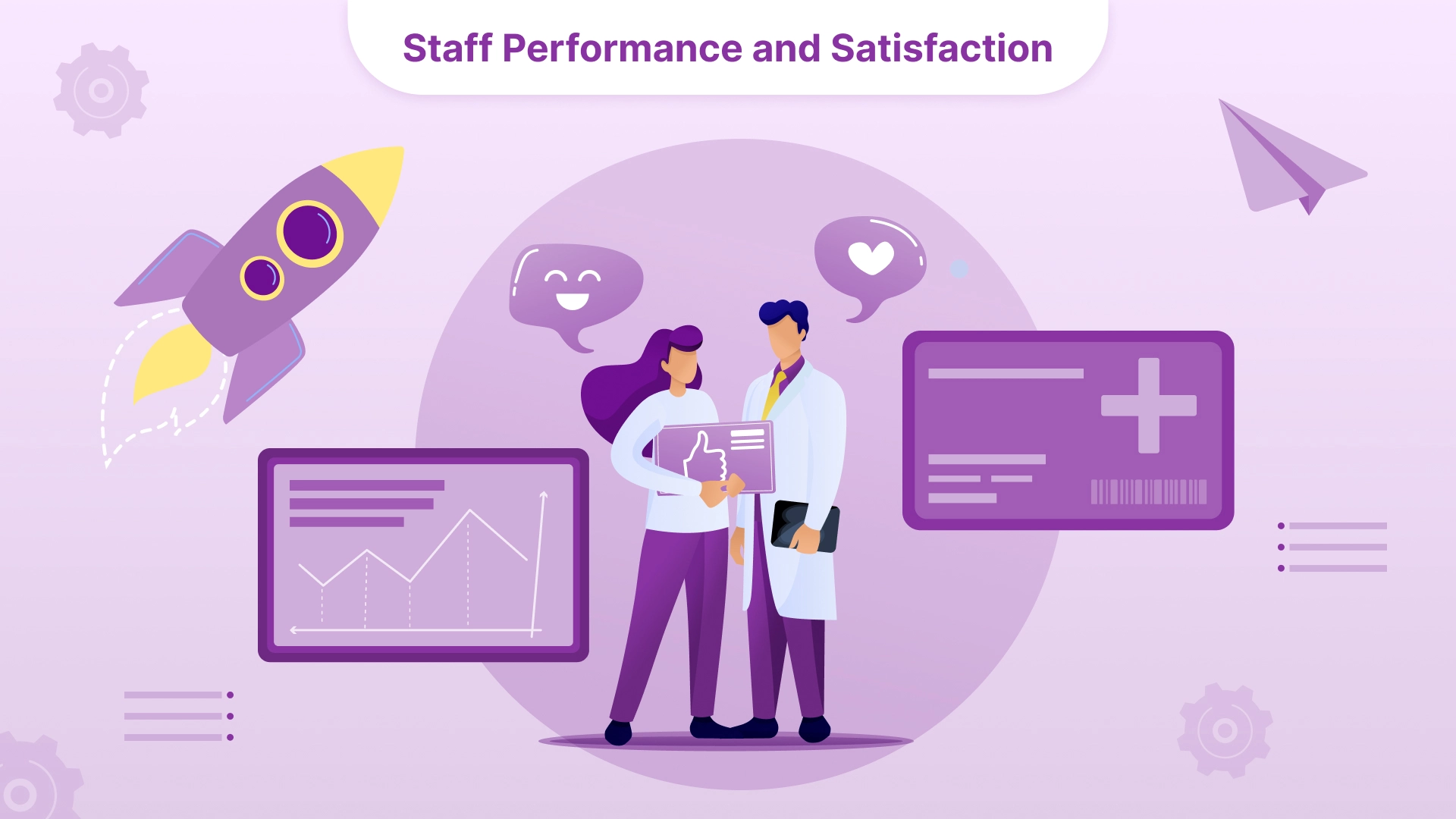

Healthcare Workforce Management Software
The well-being of both patients and healthcare professionals hinges on effective management. Enter healthcare workforce management software, a game-changing solution that has brought a breath of fresh air to the healthcare industry. It’s like a trusted partner that helps healthcare facilities optimize staff scheduling, track employee attendance, ensure compliance with labor laws, and much more. So, what exactly is healthcare workforce management software, and why is it making waves in the healthcare sector? Let’s take a closer look.
Healthcare Workforce Management Software: What Is It?
Healthcare workforce management software is a digital powerhouse designed to tackle the challenges of staff scheduling, time and attendance tracking, and compliance management. Imagine it as a digital scheduler, timekeeper, and rule enforcer all rolled into one.
Why Does It Matter?
In healthcare, timing is everything. Proper staffing ensures that patients receive the care they need when they need it. Efficient scheduling reduces the stress on healthcare professionals, helping them focus on what they do best — caring for patients. Plus, staying compliant with labor laws and regulations isn’t just about avoiding legal troubles; it’s about creating a safe and fair work environment for staff.
How It Works
Healthcare workforce management software simplifies tasks that would otherwise be time-consuming and error-prone. It takes the guesswork out of scheduling, allowing hospitals and clinics to match staffing levels with patient demand accurately. It ensures that employees are where they need to be when they need to be there and that they’re fairly compensated for their time.
Let’s dig deeper into its core features and how it’s transforming the healthcare industry.
Core Features of Healthcare Workforce Management Software
Staff Scheduling and Shift Planning
Healthcare facilities operate 24/7, and ensuring the right staff is available at all times is a monumental task. Workforce management software tackles this challenge by:
automating the creation of staff schedules, considering factors like staff availability and skillsets;
adjusting schedules in real-time to accommodate last-minute changes;
reducing overtime costs by optimizing shift assignments.
Time and Attendance
Accurate time tracking is essential for fair compensation, compliance, and workload management. Healthcare workforce management software does this by:
allowing employees to clock in and out digitally, reducing the risk of errors;
providing real-time attendance data for immediate insights into staff availability;
generating reports for payroll processing and compliance checks.
Employee Tracking
With the ability to monitor staff activities and locations in real-time, healthcare workforce management software offers:
enhanced patient safety and quality of care through immediate staff response;
improved security within healthcare facilities;
enhanced communication and collaboration among healthcare teams.
Labor Cost Optimization
Balancing budgets while providing high-quality care is no small feat. Workforce management software aids in controlling labor costs by:
identifying cost-saving opportunities through data analytics;
providing visibility into labor expenses, enabling cost reduction strategies;
streamlining administrative processes, reducing labor cost overhead.
Staffing Efficiency and Optimization
In the healthcare sector, where every decision directly impacts patient well-being, achieving the right balance in staffing is nothing short of an art form. Healthcare workforce management software serves as the brush and canvas, helping institutions paint a more efficient and optimized picture of their staff operations. Here’s how it accomplishes this:
Workforce Analytics
Workforce management software leverages data to provide a clear view of staffing needs and trends. With this feature:
healthcare institutions can analyze historical data to understand trends in patient admissions, seasonality, and peak times;
real-time data enables quick adjustments to staffing in response to unexpected surges in patient demand;
predictive modeling helps in making informed decisions about future staffing requirements.
By harnessing the power of data, healthcare facilities can ensure they have the right staff in place when and where they are needed most. This not only enhances patient care but also optimizes labor costs by avoiding overstaffing during slow periods.
Compliance Management
Compliance with labor laws, union agreements, and healthcare regulations is a non-negotiable aspect of healthcare staffing. Workforce management software plays a crucial role in ensuring compliance by:
automating compliance checks and alerting administrators to potential issues;
creating an audit trail of staffing decisions, which can be essential in demonstrating regulatory compliance;
reducing the risk of penalties, fines, and legal complications by consistently adhering to labor laws and regulations.
By making compliance management more streamlined and transparent, healthcare workforce management software frees up valuable time and resources for healthcare administrators, allowing them to focus on providing the best possible care for patients.
Workforce Efficiency
Achieving the highest level of efficiency in healthcare staffing is not just about minimizing labor costs but also about maximizing the quality of care. Workforce management software aids in this by:
streamlining administrative processes related to staff scheduling, attendance tracking, and compliance management;
reducing the administrative burden on healthcare professionals, allowing them to devote more time to patient care;
empowering healthcare facilities to allocate resources efficiently, ensuring the right staff is available to provide the best care to patients.
In essence, healthcare workforce management software is not just about optimizing schedules and reducing costs; it’s about improving the entire healthcare experience. With data-driven insights and robust compliance management, healthcare facilities can enhance patient care, staff satisfaction, and overall operational efficiency. It’s a win-win situation for all stakeholders in the healthcare system.
Integration Capabilities
One of the standout features of healthcare workforce management software is its ability to seamlessly integrate with various other systems and tools commonly used in healthcare institutions. This integration capability bridges the gap between different data sources, systems, and departments, enhancing communication, efficiency, and overall performance.
Key Aspects of Integration Capabilities:
Electronic Health Records (EHR): Workforce management software can integrate with EHR systems to access critical patient information, enabling better staff allocation and enhancing patient care. Staff can quickly review patient data, treatment histories, and care plans to make more informed decisions.
Time and Attendance Systems: Integration with time and attendance systems allows for real-time tracking of employee hours and attendance. This data can be directly incorporated into the scheduling and payroll processes, reducing errors and administrative burdens.
Payroll Systems: Seamless integration with payroll systems ensures that accurate data from time and attendance, scheduling, and compliance management is used for payroll processing. This helps in reducing payroll errors and discrepancies.
HR Management Software: Integration with HR management software enables better tracking of employee records, including certifications, training, and performance reviews. This leads to more comprehensive workforce management.
Communication Tools: Integration with communication tools, such as messaging platforms and email systems, facilitates immediate communication among healthcare teams. This is essential for rapid response to emergencies and patient care coordination.
Data Analytics and Reporting Tools: Integration with data analytics and reporting tools provides a more comprehensive view of workforce performance. This allows administrators to make data-driven decisions, optimizing staffing based on historical and real-time data.
Staff Performance and Satisfaction

A satisfied and motivated healthcare workforce is more likely to deliver high-quality care. Healthcare workforce management software plays a significant role in enhancing staff performance and satisfaction in several ways:
Staff Engagement and Satisfaction
By automating scheduling and shift planning, the software reduces the stress associated with manual scheduling, allowing staff to have more predictable work hours.
Transparency in scheduling and real-time access to their schedules fosters a sense of control and work-life balance among healthcare professionals.
Improved scheduling also ensures that staff members have adequate time off to rest and recharge, reducing burnout and turnover rates.
Labor Law Compliance and Credential Tracking
By automating compliance management, healthcare facilities can ensure that they meet labor laws and regulatory requirements consistently. This reduces staff concerns about legal issues related to working hours and breaks.
Credential tracking ensures that staff certifications are up-to-date, reducing anxiety related to maintaining qualifications and licenses.
Staff Training and Development
Healthcare workforce management software can track and manage staff training and development programs, ensuring that staff have access to the necessary training to excel in their roles.
This promotes staff growth and advancement, contributing to increased job satisfaction and motivation.
Real-time Workforce Monitoring
Healthcare workforce management software provides a window into the current status and activities of employees, allowing for immediate decision-making and enhanced patient care.
Key Aspects of Real-time Workforce Monitoring
Patient Care Coordination: Real-time monitoring enables healthcare professionals to coordinate care more effectively. For instance, a nurse can see the availability of a physician and contact them instantly for a consultation, leading to quicker and more efficient patient care.
Safety and Security: The software’s real-time monitoring capabilities enhance the security of healthcare facilities. Tracking the movements of staff helps in identifying unauthorized access or unusual activities, improving the overall safety of the facility.
Resource Allocation: Administrators can adjust staffing levels based on real-time demand. For example, during a sudden influx of patients in the emergency department, additional staff can be called in immediately to provide the necessary care.
Data-Driven Decisions: The data collected in real time is invaluable for decision-making. Administrators can respond promptly to emerging trends, allocate resources effectively, and ensure that compliance with labor laws and regulations is maintained.
In Conclusion
Workforce management software is the partner that healthcare facilities can rely on for a brighter, more beneficial future. By investing in this technology, healthcare providers are not only improving their bottom line but also taking a giant leap toward making healthcare more accessible, efficient, and compassionate for all.
Faq
What is healthcare workforce management software, and why is it important for healthcare organizations?
+Healthcare workforce management software is a specialized tool designed to help healthcare organizations efficiently manage their staff, scheduling, and related resources. It’s important for these organizations because it streamlines scheduling, tracks employee work hours, and ensures compliance with labor laws and industry regulations. This software ultimately enhances patient care by optimizing staffing levels and reducing administrative burdens, leading to cost savings and improved operational efficiency.
How does healthcare workforce management software help with staff scheduling and allocation?
+Healthcare workforce management software streamlines staff scheduling and allocation by automating the process, ensuring optimal staffing levels to meet patient needs. It helps reduce administrative tasks, minimize overstaffing or understaffing, and allows for efficient management of shifts and resources, ultimately improving patient care and staff satisfaction. Additionally, it can provide real-time data and insights for better decision-making in healthcare organizations.
What are the key features and functionalities of healthcare workforce management software?
+Healthcare workforce management software typically offers features like employee scheduling, time and attendance tracking, and workload optimization. It also provides tools for managing certifications, compliance, and training to ensure a qualified and compliant workforce. Additionally, these systems often integrate with payroll and HR systems for streamlined operations, helping healthcare facilities efficiently manage their staff and resources.
Tell us about your project
Fill out the form or contact us

Tell us about your project
Thank you
Your submission is received and we will contact you soon
Follow us
